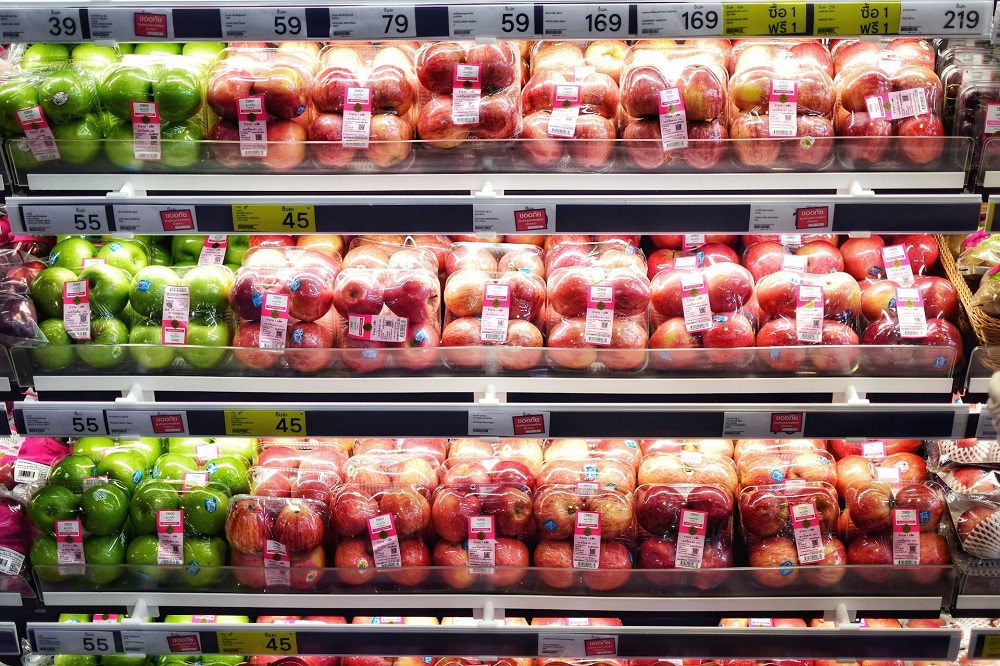In the field of produce processing, safety is not an option but a vital requirement.
There is a growing need for stringent safety assessment methods to ensure the quality and competiveness of our food supply chain.
Among the most reliable methods are hazard analysis techniques, which have garnered the attention of food safety regulators globally.
These robust techniques allow industry experts to construct a proactive approach to identifying potential risks before they become issues, enhancing product safety.
This essential procedure has a direct impact on public health, underscoring its necessity in the food industry.
The below discussion delves into the pertinent aspects of these techniques and explores their integral role in modern-day produce processing.
Contents
- Hazard Analysis Techniques In Produce Processing
- 1. Failure Modes and Effect Analysis (FMEA)
- 2. Root Cause Analysis (RCA)
- 3. Hazard Operability Analysis (Hazop)
- 4. Event Tree Analysis (ETA)
- 5. Fault Tree Analysis (FTA)
- 6. Cause-Consequence Analysis (CCA)
- 7. Layer of Protection Analysis (LOPA)
- 8. Bow-Tie Analysis (BTA)
- 9. Preliminary Hazard Analysis (PHA)
- 10. Safety Integrity Level (SIL)
- The Bottom Line
Hazard Analysis Techniques In Produce Processing
1. Failure Modes and Effect Analysis (FMEA)
In the context of produce processing, Failure Modes and Effects Analysis, widely known as FMEA, serves as a crucial hazard analysis technique.
It begins by identifying potential failure modes within a system, which could be anything from equipment malfunctioning to poor-quality raw materials.
Each failure scenario is then analyzed in terms of its consequence, which can include adverse effects on the product’s safety, quality, or production efficiency.
This analysis takes into account the severity of each failure, its occurrence rate, and the effectiveness of current detection methods.
By calculating a risk priority number for each failure mode, FMEA can help prioritize interventions to mitigate the most critical hazards.
This process provides a systematic framework for predicting and preventing failures, ultimately leading to safer and more reliable produce processing operations.
The proactive nature of FMEA facilitates a culture of continuous improvement, as potential issues are identified and addressed before they develop into actual failures.
It encourages collaboration between different sectors within a processing facility, as the success of FMEA relies heavily on the input and expertise of various team members
From food safety specialists to equipment operators, each role can provide valuable insights into potential risks and their mitigation.
It’s important to note, however, that FMEA is not a one-off exercise.
It should be revisited and updated regularly to ensure that new hazards are not overlooked and that controls remain effective as conditions change.
The implementation of FMEA enables a produce processing facility to take a proactive stance towards managing risks, ensuring the safety and quality of its products, and maintaining operational efficiency.
Even though FMEA can be time-consuming and may require significant expertise, the benefits it brings in enhancing product safety, quality, and efficiency justify the investment.
The implementation of FMEA in the context of produce processing plays a major role in protecting public health while ensuring the continued success of the processing facility.
In the grand scheme of things, FMEA is a forward-thinking tool for hazard analysis, making it an essential technique in the realm of produce processing safety and quality assurance.
2. Root Cause Analysis (RCA)
The application of Root Cause Analysis (RCA) is an essential element in the realm of hazard analysis in produce processing.
RCA is a problem-solving method employed to identify the root causes of faults or problems.
It seeks to understand the cause-and-effect relationship of identified hazards, diving deep into the issue rather than just addressing symptoms.
RCA aims primarily to prevent hazards from recurring by eliminating the root causes.
In contrast to other hazard analysis techniques, RCA is not a linear process, but rather a circular one as it seeks to dig deep until the heart of the problem is reached.
One approaches RCA by first identifying the problem, then the possible causes, and finally analysing these causes to reach the root cause.
It is important in RCA to differentiate between ‘root causes’, ‘contributory causes’ and ‘symptoms’ to accurately identify the real issue.
In produce processing, utilizing RCA contributes to ensuring the safety and quality of the end product due to its pinpoint precision in problem recognition and resolution.
The application of RCA in the context of produce processing often involves inspection of equipment, analysis of the production process, and scrutiny of procedures and protocols.
Proper documentation during an RCA process is essential, as it lays out the flow and reasoning behind reaching the root cause.
Various RCA tools such as The 5 Why’s, fishbone diagrams, and Pareto Charting are commonly used in the produce processing industry.
The 5 Why’s, for instance, advocate asking ‘Why’ five times to get to the root cause of the problem.
Meanwhile, fishbone diagrams – also dubbed as Ishikawa diagrams – are graphical tools that help in organizing and presenting the complex cause-and-effect relationships.
Pareto charting, on the other hand, assists in prioritizing the root causes by identifying the causes that will have the most significant impact when addressed.
RCA is a practice that continually evolves and improves as more problems are encountered and resolved, contributing to a safer and more efficient produce processing environment.
3. Hazard Operability Analysis (Hazop)
In the realm of produce processing, one essential hazard analysis technique is the Hazard Operability Analysis (Hazop).
Originally developed for the chemical industries, Hazop has proven to be an invaluable tool in identifying potential operational and safety issues within the production process.
The essence of the Hazop methodology is to fully understand the system design and functionality, then identify what could go wrong and the resulting consequences.
The application of Hazop in the food industry, particularly in produce processing, presents a systematic approach to identifying hazards and determining the potential risks involved in the various stages of processing.
Such risks could range from microbial contamination, use of harmful pesticides, to operational failure in machinery that could lead to product spoilage or injury to personnel.
The Hazop team will consist of individuals with diverse skill sets, including food safety professionals, process engineers, and operation experts, among others, offering a broad range of insight and expertise.
These multidisciplinary teams conduct sessions where they map out all potential deviations in a processing line using specific Hazop guide words, such as ‘no,’ ‘more,’ ‘less,’ ‘part of’, etc., to symbolize deviations from the intended operation.
Through these sessions, the team can pinpoint dangerous conditions, inefficient operations, or undesired events, outline their causes and potential consequences, and recommend appropriate measures to prevent, control, or mitigate their occurrence.
One of the key advantages of using Hazop lies in its structured and thorough investigative approach, allowing the team to uncover hazards and operability problems that might otherwise have been overlooked.
However, Hazop does come with its challenges.
It is a time-consuming process requiring input from various levels of the organization’s structure and is therefore demanding in resources.
This tool’s thoroughness also means it can be a lengthy and complex process, requiring significant dedication from the participating members.
Despite these challenges, the benefits of using Hazop far outweigh the resources required.
By identifying and addressing hidden issues early on in the process, companies can circumvent costly operational failures, food safety scares, and potential damage to their brands’ reputation.
Furthermore, regular application of the method ensures continuous improvements in processes by offering opportunities to catch and correct operational deviations before they become significant hazards or losses.
The Hazop method provides a quantifiable risk assessment tool, driving the development and implementation of risk prevention strategies, ultimately strengthening the organization’s overall safety culture and practices.
4. Event Tree Analysis (ETA)
Event Tree Analysis (ETA), as part of hazard analysis techniques applied in produce processing, is a powerful tool used extensively in risk and safety management sectors, particularly in understanding the potential evolution and consequences of events.
While typically used in industries like nuclear energy, ETA has valuable applications in the produce processing industry. This type of analysis enables industry processors to effectively anticipate the series of potential incidents that may occur.
ETA is a forward-looking or inductive strategy that begins with an initiating event and explores the impact of different factors or failures to determine various potential outcomes.
This method provides a visual representation of events that follow an initial incident, made possible using graphical tree arrangement that represents a chain of events in a chronological order.
The simple yes/no structure of an event tree allows for clear visualization of how different outcomes are related to their preceding actions, making it easy to understand complex scenarios.
ETA can help determine the sequence of deviations and their impacts in the processing of produce such as fruits, vegetables, cereals, and more.
For example, in a canning process, the initiating event could be a system failure in pasteurization, which can lead to various outcomes affecting the quality of canned goods.
Using ETA, it’s possible to map the cause-effect relationships and determine which parts of the process are most vulnerable, helping to guide corrective actions.
One key reason the produce processing industry uses ETA is to quantify consequences, estimate frequencies of given outcomes, and determine overall risk.
These risks, identified in different stages of processing, can be minimized using controls identified through ETA.
Furthermore, ETA results are used to develop safety procedures and emergency response plans, creating safety nets for unforeseen circumstances in produce processing.
The profound analysis of ETA can ensure the consistency and high quality of processed products, thus meeting regulatory standards and ensuring consumer safety.
It should be noted, however, that as a probabilistic model, ETA is subject to uncertain outcomes due to the randomness associated with the occurrence and interaction of events.
The accuracy of an ETA is highly dependent on the completeness of the data and the quality of the assumptions made during the process.
ETA allows industry processors to anticipate, understand, and prepare for the range of potential risks in various scenarios, making it an essential tool in the hazard analysis toolbox for produce processing.
Utilizing a method like ETA forms a basis for proactive prevention and mitigation measures within the sector, ultimately leading to food products that are safer for consumers.
5. Fault Tree Analysis (FTA)
Fault Tree Analysis (FTA) is a systematic, deductive hazard analysis technique used extensively in various industrial sectors, including produce processing.
It involves the use of Boolean logic to analyze the series of events that could lead to a system failure.
Essentially, FTA identifies critical failures in a system and determines the sequence of events that can end in undesirable outcomes.
FTA involves a top-down approach, where the focus begins with the overall system failure, also known as the top event.
The top event is consequently decomposed into individual hardware failures or human errors.
In other words, FTA works by tracing the causes of failure from the top to the bottom, allowing for a systematic breakdown of all possible failure chains within a process.
The method allows us to identify single points of failure and understand how different failures interact to contribute to the overall system failure.
Through visual representation, it provides a clear and concise illustration of how various elements within a system interact.
As such, industries can take proactive measures to identify potential hazards, prevent failures, and subsequently improve system reliability.
In the realm of produce processing, FTA can be of significant value in understanding and managing risks associated with various processing stages right from harvesting to packaging.
For instance, a fault tree analysis can identify potential instances of microbial contamination during the handling of fresh produce.
It can also highlight the risks associated with improper temperature controls during various stages of produce storage and transport.
Through such thorough evaluation, measures can be taken to prevent these failure modes, therefore ensuring the safety and quality of the produce.
Furthermore, FTA offers a quantitative risk assessment where the probability of the top event occurrence is calculated.
This information can then be used to prioritize risk mitigation strategies.
Overall, -tree analysis in produce processing requires an in-depth understanding of the system and its component parts to correctly constitute the fault trees and analyze the outcomes.
6. Cause-Consequence Analysis (CCA)
Cause-Consequence Analysis (CCA) is an imperative tool that is utilized within the process safety analysis techniques, particularly within produce processing and food safety measures.
This technique effectively analyzes possible failures and their consequences in a systematic and graphical manner by mapping out different failure paths and their likely outcomes.
The CCA technique primarily consists of two key elements; the first is the ’cause’ analysis, and the subsequent one is the ‘consequence’ analysis.
The ’cause’ analysis deals with the identification and evaluation of potential initiating events or failures.
The ‘consequence’ analysis, on the other hand, focuses on determining and evaluating the potential effects of these initiating events or failures.
The technique utilizes logical gates to represent different events and pathways that can lead to a failure scenario.
Understanding and applying these two elements help to predict the potential consequences that a failure or an unfortunate event can have on the produce processing operations.
The process of Cause-Consequence Analysis is commenced by identifying all possible initiating events or failures.
After the initiation events are identified, they are further analyzed to depict how they can possibly interact with the system and what consequences can occur as a result.
The CCA process does not limit itself to studying the direct consequences, but it also covers indirect and secondary effects that can potentially arise from the primary initiating event.
The mapping or graphical representation of cause and consequences is an important step as it gives a clear visualization of the cause-effect relationship between initiating events and their potential outcomes.
Cause-Consequence Analysis has a huge impact on maintaining the safety and efficiency of the produce processing industry by identifying risks in the early stages and addressing them proactively.
Couple with other risk assessment techniques, CCA significantly contributes to the optimization and improvement of process safety through the implementation of effective countermeasures, based on the evaluated risks.
It is imperative to note that accuracy is crucial in the Cause-Consequence analysis process, as incorrect identification and analysis can lead to misleading results, negating the purpose of the entire exercise.
Constant updating and revision of the CCA is also important, as changes in the system and process conditions can alter the initiating events and their potential consequences.
Overall, the integration of CCA within the risk management strategy improves the safety robustness of the produce processing system and ensures the efficient operation of the industry.
7. Layer of Protection Analysis (LOPA)
Within the realm of produce processing, Layer of Protection Analysis (LOPA) is a crucial analytical method employed in hazard analysis.
This semi-quantitative risk assessment tool is characterized by an ordered series of protection layers, instrumental in hazard control.
It becomes exceedingly vital when the entity under consideration encounters frequent, potential hazardous events with a high likelihood of repercussions.
As the name suggests, LOPA operates on the concept of multiple protective layers, which can limit the severity of potential risks.
The fundamental concept of LOPA revolves around processing industries using independent protection layers (IPLs) as their critical defense.
The objective is not only to identify potential hazards but also to assign appropriate, effective protective measures against each threat.
These independent protection layers are often a composite of safety interlocks, physical constraints, procedural systems, and risk management strategies.
The more the number of independent layers, the more fortified is the protection system against potential hazards and accidents in the processing environment.
The LOPA methodology is generally coupled with other hazard analysis techniques to decipher a comprehensive understanding of possible dangers.
This method usually begins with identifying potential events (in this context, produce processing hazards) and likelihoods of their occurrence.
It involves a systematic procedure where each identified hazard is evaluated in terms of severity, frequency, and the effectiveness of the ESPs and IPLs.
Post this analysis; suitable actions are devised based on the probability or risk level of those particular events on the processing procedure.
However, the procedure for protective layer implementation is not haphazard, but rather, it follows a set order based on the degree of potential risk attributed to each hazard.
In retrospect, LOPA provides a structure that records and systematizes hazard assessment, based on which appropriate preventive measures are initialized.
LOPA’s main advantage is its ability to communicate and justify the need for safety systems clearly and approach the risk management process in an organized, measured way.
Therefore, the LOPA is a simplified yet robust tool that facilitates hazardous event prediction, enabling industries to avoid potential catastrophic scenarios in produce processing.
8. Bow-Tie Analysis (BTA)
The Bow-Tie Analysis (BTA) is a vital tool that is widely used in hazard analysis techniques in produce processing.
The basic concept of BTA is fascinated by its shape which looks like a ‘Bow-Tie’ and translates complex risk scenarios into understandable visual diagrams.
BTA essentially clusters the facets of risk management into a straightforward and digestible image.
This approach enables you to visualize causes, events, and consequences in a single diagram, which provides a comprehensive picture of potential hazards in produce processing.
The ‘knot’ of the bow-tie represents the top event, usually a significant deviation from normal operation or a condition that could lead to a hazardous situation.
It directly provides you with a clear snapshot of all conceivable hazard scenarios and aids in identifying effective measures against each one of them.
The left-hand side of the bow-tie diagram represents the causes of the event, and the right-hand side demonstrates the effects of that event, making it an effective tool in cause-and-effect analysis.
This is where BTA comes into its strength; it helps identify potential catastrophe before it becomes a reality, by unveiling any unidentified risks or gaps in your risk management system.
Moreover, BTA enables an organization to exhibit the effectiveness of their risk control measures visually, from accidental releases to protection controls.
In the case of produce processing, hazards might include contamination, faulty equipment, or biohazards, amongst others and through BTA, you can easily identify and categorize these risks.
Not only does it identify and analyze risks, but BTA also plays a crucial role in devising coping strategies by displaying potential escalation paths.
Utilizing Bow-Tie Analysis allows a straightforward communication of complex processes to staff, leading to an efficient knowledge transfer regarding potential hazards, and how to handle them.
While no single hazard analysis tool is a one-stop solution for risk management, BTA, when used in conjunction with other analysis tools, provides a robust framework for hazard identification, risk management, and communication.
The application of BTA in the field of produce processing demonstrates its value in ensuring the safety and increasing the total efficiency in the entire production process.
Undeniably, the benefits of using Bow-Tie Analysis extend beyond just understanding hazards – it’s a holistic approach to managing risk that can significantly enhance safety and efficiency in produce processing.
Thus, the implementation of Bow-Tie Analysis in produce processing can serve as a powerful tool in hazard analysis, prevention, and control.
9. Preliminary Hazard Analysis (PHA)
The Preliminary Hazard Analysis (PHA) is a proactive and systematic tool applied in hazard analysis in produce processing.
Primarily, it seeks to identify potential hazards in processing machinery systems, operational procedures, and inherent product risks.
This scrutiny process occurs in the initial stages of product process design or system development.
The comprehensive nature of PHA allows for the identification of risks even before the process becomes operational.
Through this, companies can implement corrective measures early on, preventing the occurrence of potential failures and mishaps.
The role of PHA in processing industries should not be taken lightly as it has enormous implications on the overall safety of operations.
In a nutshell, a Preliminary Hazard Analysis determines the risk level of each identified hazard and utilizes its findings to dictate safety requirements in the system.
One significant attribute of PHA is its simplicity; it doesn’t require intricate statistical data for execution.
Despite this straightforwardness, the results offer crucial insights into system vulnerability and areas that need immediate attention.
The primary steps involved in the PHA process include identifying potential hazards, classifying the severity of each hazard, determining hazard probabilities, and recommending mitigation measures.
During hazard identification, extensive brainstorming by experts closely scrutinizing the system is carried out.
With severity classification, each hazard gets classified into categories, such as marginal, critical, and catastrophic, based on potential harm or disruption to the system.
Determining hazard probability involves estimating the frequency of occurrence of each hazard, allowing for prioritization.
This prioritization ensures that high-risk hazards are addressed promptly, enhancing overall system safety.
Recommendation of mitigation measures is perhaps the most crucial step as it involves outlining remedial actions to eliminate or reduce the risks posed by the identified hazards.
The thoroughness of a PHA process ensures that no possible hazard goes unnoticed or unaddressed, thereby expediting safe process implementation.
10. Safety Integrity Level (SIL)
The concept of Safety Integrity Level (SIL) is a crucial aspect of hazard analysis techniques in produce processing.
This method of risk assessment pertaining to the failure of safety systems has unique implications in this industry.
SIL measurement, in essence, determines the reliability of safety systems put in place to prevent or mitigate identified risks.
It ascertains the probability of failure on demand for safety-related systems.
The essence of SIL measurement is to guide organizations in producing safer products by ensuring that their safety systems can adequately protect against hazards.
The application of SIL ranges from determining when preventive maintenance should be conducted to enabling the appropriate response to potential failures.
It adds depth to understanding the safety deficiencies that might result in unacceptable risk during produce processing.
To properly understand the concept, it is mandatory to grasp that SIL levels vary from one to four, with SIL 1 representing the most basic level of safety, and SIL 4 representing the highest level of safety.
This system discourages complacency by setting continuous improvement targets in safety performance.
SIL assessments must be performed by competent professionals, given the technical complexity and importance of the task.
Among common tools used in performing a SIL assessment include Hazard and Operability study (HAZOP), and Layer of Protection Analysis (LOPA).
An integral aspect of a SIL assessment is the continuous monitoring and updating of the safety strategy.
Consistent reevaluation is crucial to keeping safety strategies aligned with potential changes in hazards or risks.
This is more relevant in produce processing, where new hazards may emerge with changes in technology, processing methods, or regulatory standards.
The application of SIL in the produce processing industry is a proactive move to mitigate unforeseen hazards and provide a safety net for the population consuming these products.
Thus, understanding and properly implementing the Safety Integrity Level in a produce processing environment significantly contributes to the reduction of workplace accidents and promotes the production of safe products.
The Bottom Line
With the various safety and hazard analysis methods covered in this article, it is clear that each approach offers unique strengths for distinguishing, controlling, and preventing industrial hazards.
Application of methodologies such as FMEA, RCA, Hazop, ETA, FTA, CCA, LOPA, BTA, PHA, and SIL can significantly enhance the overall safety and reliability of industrial operations.
While each method may target a unique sector of safety analysis, implementing a blend of these techniques can afford a robust, comprehensive safety management system.
Regardless of the industry, maintaining safety and reliability should be of paramount importance.
Therefore, the understanding and application of these pivotal analysis methods are crucial for any organization aiming to promote a safe and efficient work environment.




